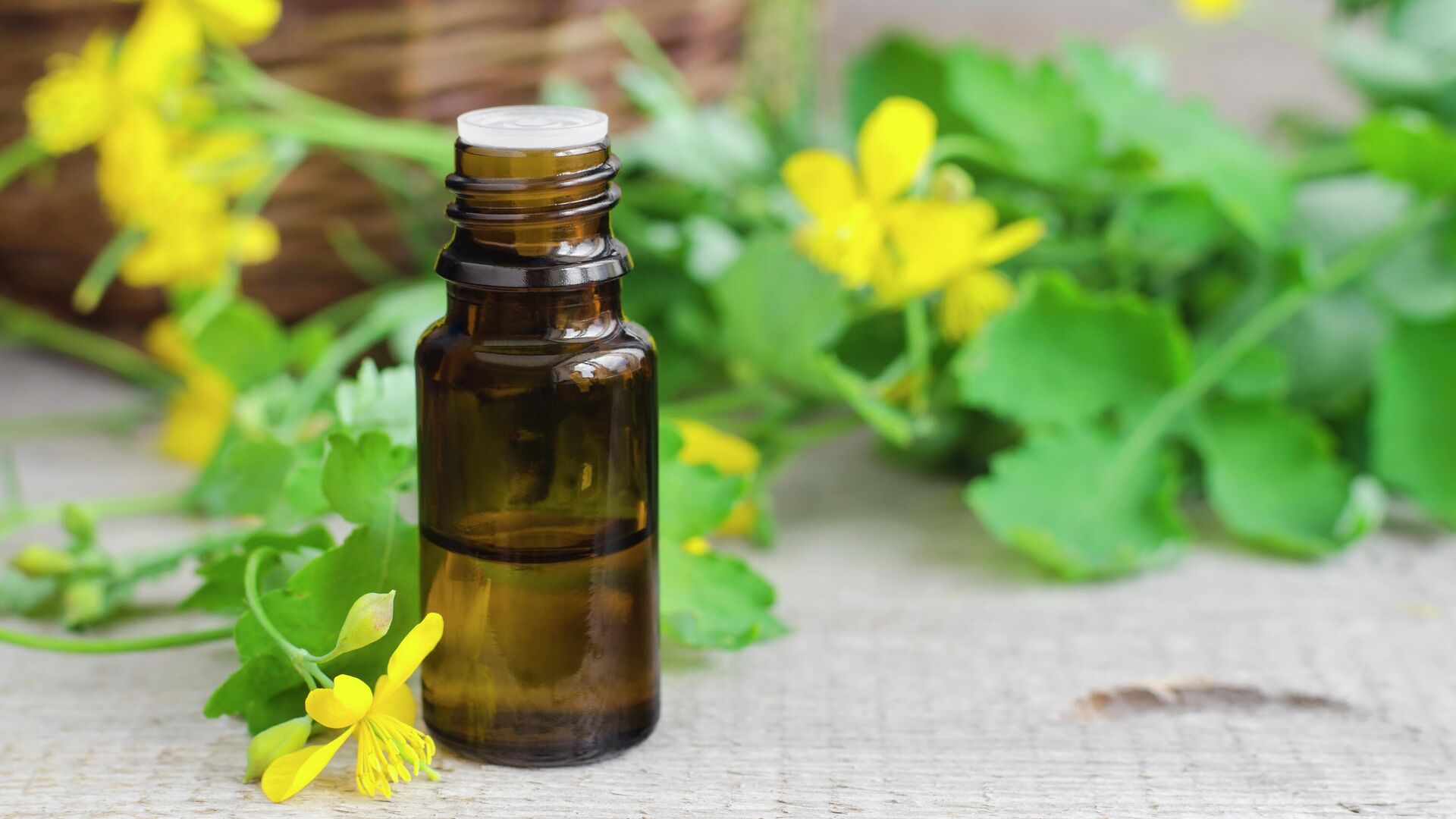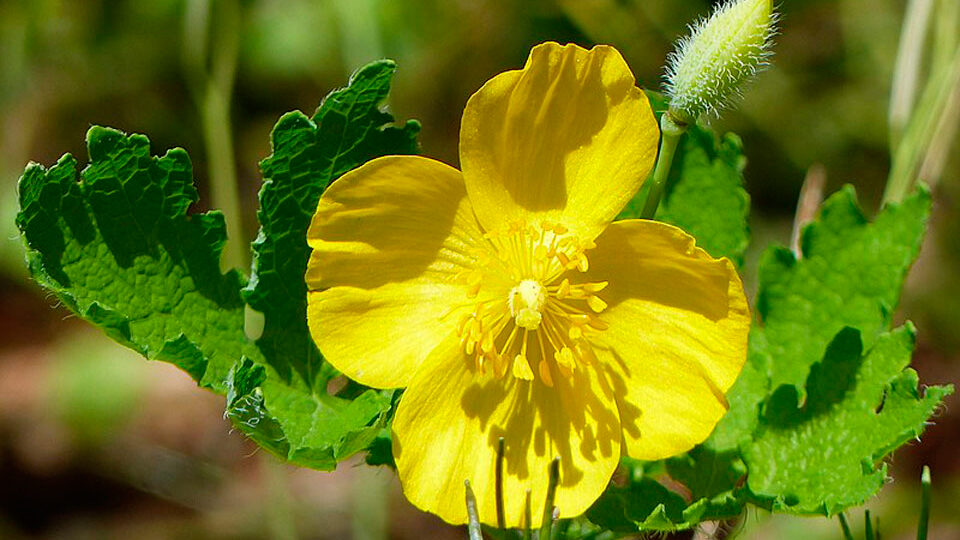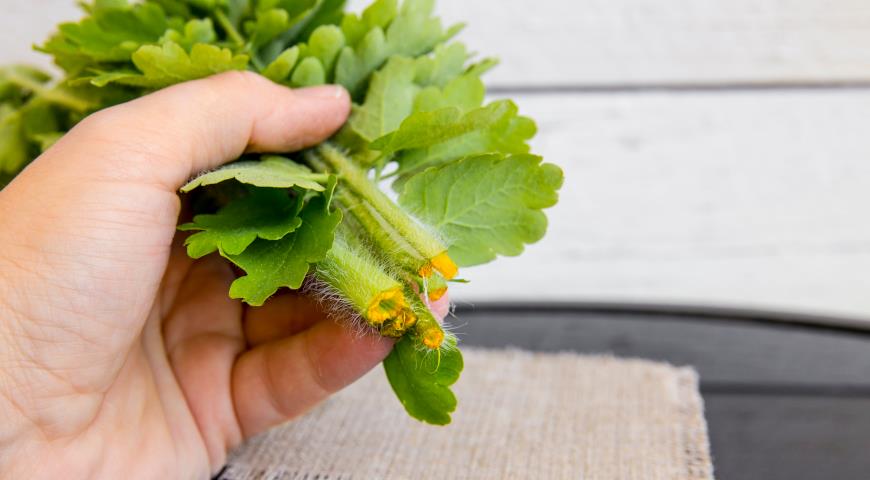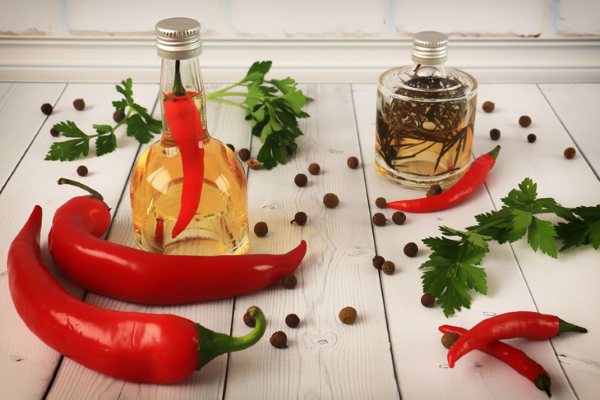- Fast
shipping - Fresh
flowers - Favourable
prices
Tincture of celandine
Celandine (lat. Chelidonium majus) is a plant that has been used in medicine for many centuries. Its first mention dates back to antiquity, when it was used as a remedy for eye diseases, liver diseases and other ailments. In the Middle Ages, celandine was widely known in Europe as a remedy for cancer and other tumors. During this period, its other properties were also described, such as anti-inflammatory, antifungal and antimicrobial effects.
In Ukraine, celandine began to be used from the 16th century. It was part of many folk recipes and was used to treat diseases of the liver, biliary tract, gastrointestinal tract, skin diseases and other ailments.
Currently, celandine is one of the most popular herbal remedies in medicine. It is used to treat various diseases, including fighting tumors and metastases. Celandine is also widely used in cosmetology and in the production of cosmetics.
Useful properties of celandine
Celandine is a plant that has many beneficial properties. Here are some of them:
- Anti-inflammatory action. Celandine contains substances that reduce inflammation and promote wound healing.
- Antimicrobial action. Celandine has properties that help fight bacteria and fungus, making it useful for treating skin conditions.
- Liver cleansing. Celandine contains alkaloids that help cleanse the liver of toxins and bile ducts.
- Regulation of bile secretion. Celandine helps stimulate bile flow, which can improve digestion and relieve symptoms associated with gallstones.
- Antitumor activity. Studies show that celandine can help fight cancer cells and prevent the growth of tumors.
- Decreased blood pressure. Celandine can lower blood pressure due to its alkaloid content.
- Vision improvement. Celandine contains carotenoids that promote eye health and improve vision.
These are just some of the beneficial properties of celandine. However, as with any treatment, you should consult your doctor before using celandine for medical purposes.
Forms of application of celandine
The celandine can be used in different forms:
- Tinctures and decoctions. For the preparation of tinctures and decoctions, the roots, leaves and flowers of celandine are used. They can be taken internally or externally to treat skin conditions.
- Extracts. Celandine extracts may contain more active ingredients than tinctures and decoctions, and therefore they may be more effective in the treatment of certain diseases.
- Capsules and tablets. Celandine is available in capsule and tablet form, which can be convenient to use and dose.
- Ointments and creams. Ointments and creams based on celandine can be used to treat skin conditions such as eczema and psoriasis.
- Dry powder. Dry powder from celandine roots can be added to food or taken orally as an additional source of nutrients.
As with any use of herbal preparations, it is important to consult with your doctor to find out the correct dosage and possible side effects.
Recipes for tinctures from celandine
Here are some simple celandine tincture recipes:
Tincture from the root of celandine on vodka or medical alcohol:
Ingredients:
- 50 g of celandine root
- 500 ml vodka
Cooking:
- Grind the celandine root.
- Put it in a glass jar and fill with vodka.
- Close the lid tightly and leave to infuse in a dark place for 2-3 weeks.
- Shake the jar periodically.
- After infusion, strain the tincture through cheesecloth or filter.
- Ready tincture can be taken in the dosage recommended by the doctor.
Tincture of celandine leaves:
Ingredients:
- 50 g celandine leaves
- 500 ml boiling water
Cooking:
- Grind celandine leaves.
- Put them in a glass jar and cover with boiling water.
- Close the lid and leave to infuse in a dark place for 1-2 hours.
- After infusion, strain the tincture through cheesecloth or filter.
- Ready tincture can be taken in the dosage recommended by the doctor.
Tincture of celandine flowers:
Ingredients:
- 50 g of celandine flowers
- 500 ml vodka
Cooking:
- Grind celandine flowers.
- Put them in a glass jar and fill with vodka.
- Close the lid tightly and leave to infuse in a dark place for 2-3 weeks.
- Shake the jar periodically.
- After infusion, strain the tincture through cheesecloth or filter.
- Ready tincture can be taken in the dosage recommended by the doctor.
It is important to remember that celandine is a strong herbal remedy and misuse can lead to side effects. Before using tinctures from celandine, you should consult your doctor.
Cosmetics from celandine. Cooking at home.
Celandine can be used as an ingredient in the preparation of various cosmetics at home. Here are some examples of recipes:
Face mask with celandine and honey:
- 1 tablespoon fresh minced celandine
- 1 tablespoon honey
- A few drops of lemon juice
Mix all ingredients in a bowl until smooth. Apply the mask on your face and keep it on for 15-20 minutes. Then wash off with warm water.
Face tonic with celandine and green tea:
- 2 tablespoons fresh minced celandine
- 1 glass of green tea
- A few drops of lavender essential oil
Mix all ingredients in a spray bottle. Shake before use. Apply toner to face with a cotton pad or sprayer
Hair care product with celandine and burdock oil:
- 2 tablespoons fresh minced celandine
- 1 tablespoon burdock oil
- A few drops of rosemary essential oil
Mix all ingredients in a bowl until smooth. Apply the mixture to your hair and massage for 5-10 minutes. Then wash off with warm water and shampoo.
Some people may be sensitive to celandine and/or other ingredients, so before using celandine-based cosmetics, it is recommended to test for sensitivity on a small area of skin. Also be aware that homemade beauty products are not a substitute for professional beauty products and may not be suitable for all skin and hair types.

